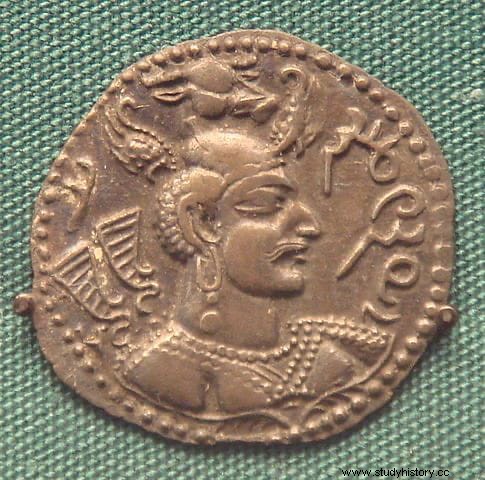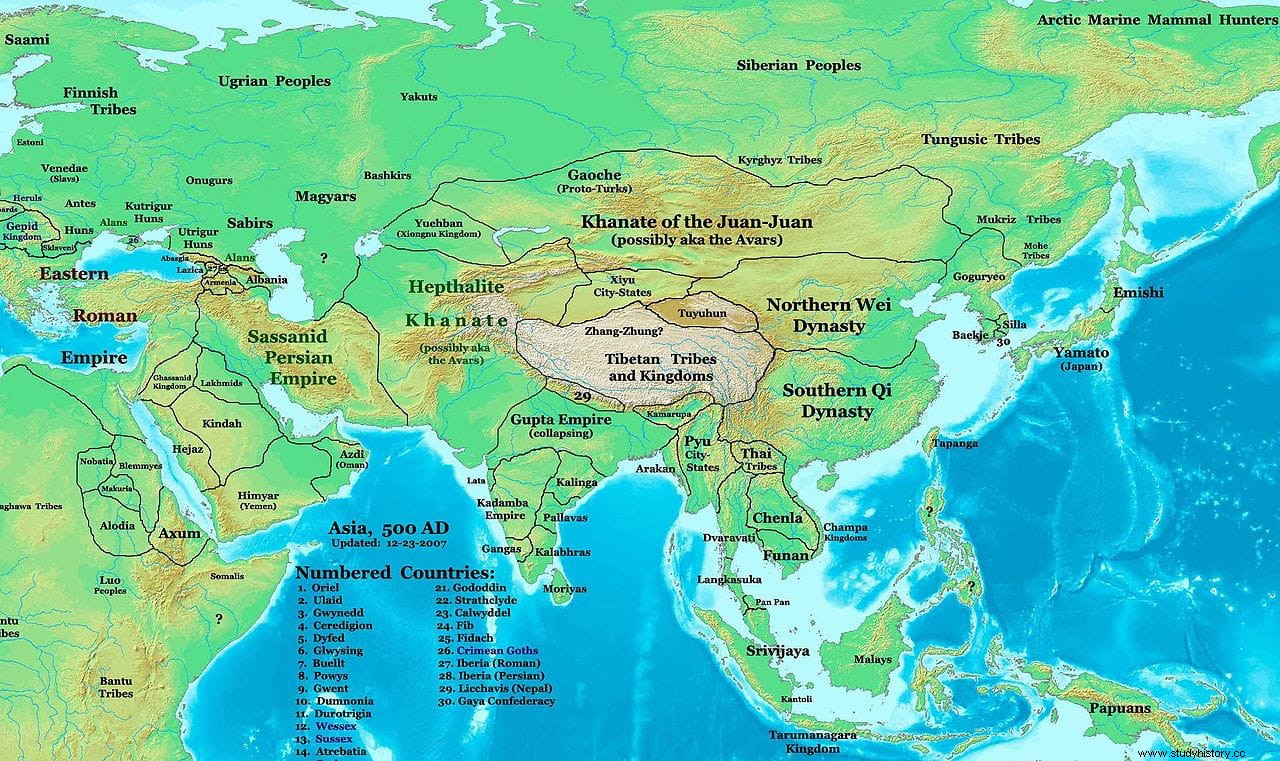We generally know and study the colossal mosaic ofpeoples and ethnic groups who lived in the transition from Antiquity to the Medieval focusing attention on the movements of barbarian peoples to the west.
However, some moved in the opposite direction and we lose track of them a little in the immensity of the Asian continent and its endless history. A good example of this is that of the Hephthalites, who are also called by other names, depending on the nationality of the chroniclers, the most peculiar being White Huns .
Hephthalites is how the Greeks knew a nomadic people and White Huns was the nickname incorporated by their Byzantine successors. It seems that its origin should be placed in that confusing Turkish-Iranian region , as can be deduced from the language they spoke and that researchers have traced, fundamentally, from numismatics; That is why some identify them, not without controversy, as Indo-Europeans -or, at least, related to them-. However, there is another current that makes them come from the northern part of the Indian subcontinent (more or less in what are now Pakistan and Afghanistan) as descendants of the Xionites or Huna, so the only relationship they would have with the Huns would be nominal (or perhaps, as some experts suggest, they called themselves that to instill fear).

The little that seems really clear is that it was not a sedentary town; probably not even one but a kind of confederation of several with common cultural elements and language as a link. Even so, their expansion was so extensive territorially that they did manage to found some permanent settlements, mostly military fortresses to control their domains; but they also had their capital, Badian (the modern Afghan city of Kunduz), although the court was mobile.
The Byzantine historian Procopius of Caesarea he described them as white-skinned and less wild than the rest of the Huns, with a legal code and a monarchical institution (the khanate ). Procopius is the main written source on the Hephthalites, along with the Chinese chronicles , which refer to them with the name of yta (Hua or Hudun in the oldest versions) and consider them descendants of the Yuezhi tribe. References to their religion are also Chinese , a mixture of Buddhism and Zoroastrianism with elements of Persian Manichaeism.
The fact is that initially they were vassals of the rouran , another confederation of nomadic ancestors of the Mongols that is currently assimilated to the Avars and that had been established in the interior of China in the fourth century. The Hephthalites, with whom they had had cultural and political exchanges, freed themselves from them a century later, starting an expansion towards the southeast . They occupied the steppes of Turkestan, then followed by Sogdiana and Bactria (territories of present-day Uzbekistan, Afghanistan and Tajikistan). They forced the Scythians to move and in the last quarter of the 5th century they entered Persia , which, after overcoming its initial resistance in the Battle of Herat (in which King Perod I even died), they made a tributary. They remained there until the Sassanids of Chosroes I allied themselves with the Turks to expel them in the year 557, although they did not leave empty-handed because, apparently, that half century made them more refined.

At the same time, and probably in alliance with the Xionites (another Iranian-speaking people settled in Bactria that some sources refer to as Red Huns), had entered Afghanistan and Pakistan, reaching the gates of India , the northern part of which was ruled by the Gupta Empire . The emperor at that time was Kumaragupta, who managed to hold them back until the early 6th century; then they took possession of the Ganges valley until the kings Yasodharman and Narasimhagupta expelled them in the year 528. The Hephthalites, whom the Indians called shevetahûna (White Huns) had gone from possessing considerable territory to being defeated on all fronts.
The worst, however, was yet to come because of its peak period , back in the middle of the sixth century, the one in which they dominated what are now Afghanistan, Turkmenistan, Uzbekistan, Tajikistan, Kyrgyzstan, Kazakhstan, Pakistan and parts of India and China, they went on to be defeated time after time by multitudes of adversaries. The köktürks , another nomadic confederation from Mongolia, made an alliance with the Persian Sassanids and in 563 they crushed the Hephthalites definitively to divide up Turkestan (later the Köktürks would ally with the Byzantines to try to conquer Persia, although that is another story ). The last khan hephthalite, Yudhishthira , reigned until 670, when his dynasty was replaced by the Afghan Sashi Kabul. In fact, it is believed that the Pashtuns current descendants of that semi-unknown people, like the Turkmens and Kazakhs.
